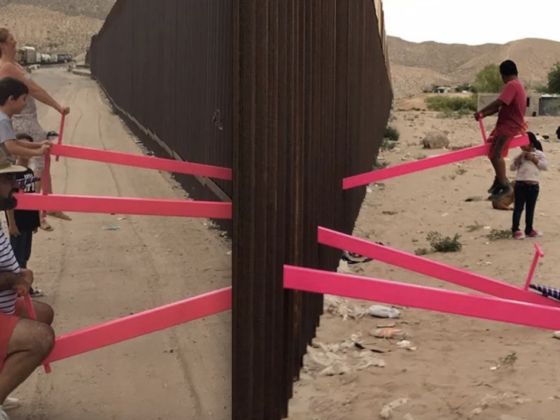With all the political discourse surrounding the US-Mexico border, a whimsical giant seesaw might be the last thing you’d expect to find there. A new interactive art installation, however, has indeed been built at the border fence that separates Sunland Park, New Mexico, and Ciudad Juarez in Mexico. The project was designed by Ronald Rael, architecture professor at the University of California, Berkeley, and Virginia San Fratello, associate professor of design at San Jose State.


Seesaw Installation on the US-Mexico Border Brings People From Both Sides Together
Rael said in an Instagram post, “The wall became a literal fulcrum for the US-Mexico relations, and adults were connected in meaningful ways on both sides with the recognition that the actions that take place on one side have a direct consequence on the other side.”
According to photos posted on Rael’s social media, the seesaw has already succeeded in bringing the two countries together, as both children and adults — from both countries — can be seen playing on the installation.
The idea for the project was first revealed in the book Border Wall as Architecture: a Manifesto for the US-Mexico Boundary. The book, edited by Rael, proposes that “the nearly 700 miles of wall is an opportunity for economic and social development along the border that encourages its conceptual and physical dismantling.”
On the actualisation of this long-envisioned project, Rael wrote, “[This is] one of the most incredible experiences of my and [San Fratello’s] career, bringing to life the conceptual drawings of the Teetertotter Wall from 2009 in an event filled with joy, excitement, and togetherness at the border wall.”
The installation comes on the heels of the announcement from the Supreme Court on July 27 that President Trump will be given $2.5 billion in Pentagon funds for a section of the wall on the southern border.